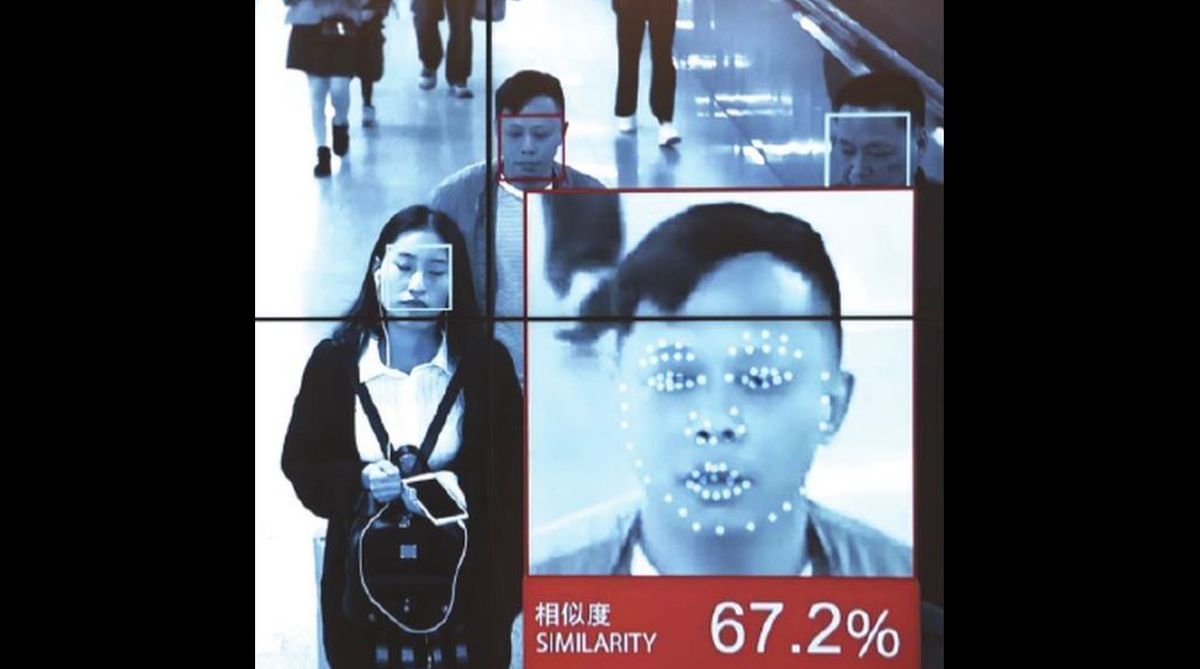Miscreants break into house of Asansol businessman
Asansol South Police has already started investigations and are scanning the CCTV footages of the house in the resident of businessman Subir Basu in North Hill View area.
While the use of Automated Facial Recognition by the police raises legal and ethical issues, it is an important tool for nabbing criminals, say Bethan Davies, Andrew Dawson and Martin Innes.

Police officers’ ability to recognise and locate individuals with a history of committing crime is vital to their work. In fact, it is so important that officers believe possessing it is fundamental to the craft of effective street policing, crime prevention and investigation.
However, with the total police workforce (in the UK) falling by almost 20 per cent since 2010 and recorded crime rising, police forces are turning to new technological solutions to help enhance their capability and capacity to monitor and track individuals about whom they have concerns.
Advertisement
One such technology is Automated Facial Recognition (known as AFR). This works by analysing key facial features, generating a mathematical representation of them, and then comparing them against known faces in a database, to determine possible matches.
Advertisement
While a number of UK and international police forces have been enthusiastically exploring the potential of AFR, some groups have spoken about its legal and ethical status. They are concerned that the technology significantly extends the reach and depth of surveillance by the state.
Until now, however, there has been no robust evidence about what AFR systems can and cannot deliver for policing. Although AFR has become increasingly familiar to the public through its use at airports to help manage passport checks, the environment in such settings is quite controlled.
Applying similar procedures to street policing is far more complex. Individuals on the street will be moving and may not look directly towards the camera. Levels of lighting change, too, and the system will have to cope with the vagaries of the British weather. To build a picture of how UK police are using the current AFR technology, last year we were commissioned to evaluate a South Wales Police project which had been designed to test the usefulness of AFR across different everyday policing situations.
Starting with the 2017 UEFA Champions League Final, held in Cardiff, our team observed officers using the technology and analysed the data generated by the system. We wanted to assemble an understanding of how police staff interacted with the system and what outcomes it enabled them to achieve, as well as the challenges they experienced when using it.
The South Wales Police officers use AFR in two modes. “AFR Locate” uses live feeds from CCTV-type cameras usually mounted on marked police vans to compare detailed measurements of peoples’ facial features against a database of police custody images. These images were all of individuals deemed to be persons of interest. Typically, this database contained 600-800 images.
The other mode, “AFR Identify”, is rather different. Here, images of unidentified suspects from past crime scenes are compared to the force’s database of police custody photos. This database is made up of roughly 450,000 images.
Overall, the evaluation concluded that having AFR enabled police to identify suspects that they probably would not otherwise have been able to. Over the 12 month period of the research, in excess of 100 arrests and charges were – at least in part – assisted by AFR.
But this is not a “plug and play” system. The police had to adapt a number of their standard operating procedures to get it to work efficiently. For example, upon discovering the significant impact of image quality on the system, identify operators fed into custody detention officers’ training, to ensure all future images would work effectively.
Only with time did the officers learn how to configure and use the system better. This was supported by technological developments in the form of a more sophisticated algorithm introduced part way through the trial, too. This improvement was significant. In the original Champion’s League deployment, only 3 per cent of the matches suggested by the system were judged to be accurate by operators. By March 2018, however, this figure was around 46 per cent.
As with all innovative policing technologies there are important legal and ethical concerns and issues that still need to be considered. But in order for these to be meaningfully debated and assessed by citizens, regulators and law-makers, we need a detailed understanding of precisely what the technology can realistically accomplish. Sound evidence, rather than references to science fiction technology – as seen in films such as Minority Report – is essential.
With this in mind, one of our conclusions is that in terms of describing how AFR is being applied in policing currently, it is more accurate to think of it as “assisted facial recognition”, as opposed to a fully automated system. Unlike border control functions – where the facial recognition is more of an automated system – when supporting street policing, the algorithm is not deciding whether there is a match between a person and what is stored in the database. Rather, the system makes suggestions to a police operator about possible similarities. It is then down to the operator to confirm or refute them.
The writers are, respectively, Research Assistant, Research Associate and Director at Cardiff University. This article was published on www.theconversation.com
Advertisement